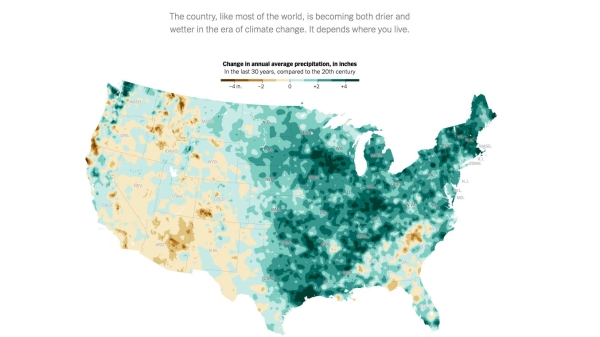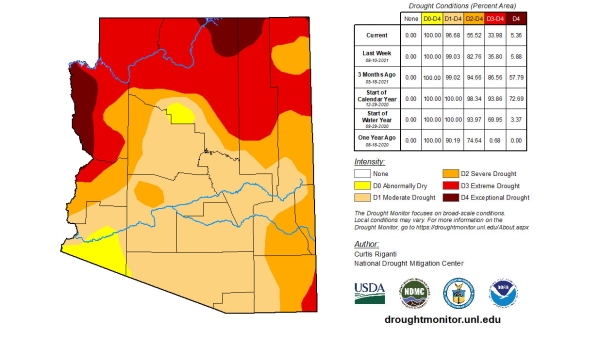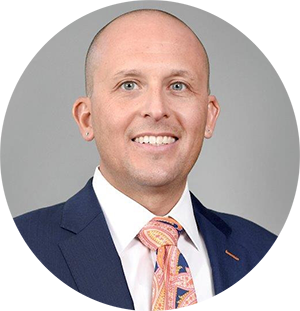
How can we better communicate about risks associated with environmental change?
Bradley Adame, ASU Hugh Downs School of Human Communication
"I do what I can to reduce my impact on the climate, but it feels like a drop in the bucket in the grand scheme of things."
- Survey respondent
Background
The World Health Organization has identified climate change as one of the top threats to global health, with research indicating that, worldwide, 90% of people breathe polluted air every day. In the Phoenix area, these numbers are especially salient as Maricopa County recently received an 'F' rating for pollution from the American Lung Association.
Relatedly, all of the seven warmest years on record have been the last seven years, with the summer of 2021 being the hottest of record so far. The summer of 2020 was recorded as the hottest summer in Phoenix history with a high average temperature for August of 110.7 degrees. Climate scientists predict that summers will continue to get hotter, and that we will experience increased weather variability during other seasons as well. These and other environmental indicators tell us that Earth's climate is getting warmer, and that our time to reverse these effects is growing shorter. These changes will have far-reaching consequences for all areas of life both here in Phoenix and across the globe.
The scientific community is in agreement as to the veracity of both the causes and effects of climate change. Despite this, there is significant resistance at multiple societal levels to enact policies and change behaviors that will mitigate and reverse climate change. Fundamentally, this disconnect is communicative; climate-related information is high quality, but it is not being deployed in a way that motivates individuals to mitigate their risk and reduce the consequences. Here, communication theory is a valuable tool for understanding how at-risk populations understand their risk, potential outcomes and approaches for mitigating both the risks and consequences.
Research questions
-
How can we address the disconnect between the actual versus perceived risk of environmental change consequences?
-
Which behavioral changes are individuals willing to make to mitigate environmental change consequences?
-
How useful is the Vested Interest Theory (VIT) framework for explaining the relationship between residents' attitudes and behaviors?
-
What messaging strategies might be useful for communicating environmental change risk to U.S. residents?
Methods and findings
Adame conducted a survey of United States residents, with an emphasis on Arizona residents. To collect data, he partnered with Amazon's Mechanical Turk and Qualtrics. Each service allowed him to connect with individuals interested in completing surveys. He designed these surveys using Vested Interest Theory (VIT) and included questions about potential responses to environmental change. The surveys also included questions designed to understand how people respond to recommendations made by national and international agencies that are tasked with fighting environmental change. Adame found that VIT is a valuable framework for understanding residents' attitudes toward environmental change risks and their willingness to engage in behaviors that can help mitigate the climate crisis.
Importantly, his results showed that perceptions about the timeline of potential consequences was an important factor in predicting residents' risk perceptions. Those who believed that Earth would face climate-related consequences in the near future were more motivated to act than those who believed that consequences would not arise until far in the future.
Efficacy was also an important factor. Many survey respondents indicated a willingness to help mitigate environmental change consequences, but the solutions that were offered to them were either impossible or not appropriate for their lives.
Many people also reported that corporations and governments need to be held responsible. They noted that individual behavioral changes can only go so far; there are large corporate polluters that must alter their policies and practices to create meaningful change.
Partners
-
Amazon's Mechanical Turk
-
Qualtrics
Impact
Adame's results show that VIT is a valuable framework for understanding the relationship between United States residents' attitudes and behaviors associated with environmental change risks. Messages designed to communicate environmental change risks should be framed according to VIT variables. Messages should emphasize the certainty of consequences, the short timeline when they will manifest and the behaviors that citizens can enact to help mitigate the consequences.
He also found that people who had already experienced consequences from environmental change were far more willing to act to help mitigate consequences. Importantly, messages should be tailored to populations in specific regions to address local hazards, risks and solutions. Potential responses and behaviors should be customized and framed to meet local needs and contextual considerations.
Messages framed using communication theory are known to be more effective than those that are not. VIT can be used to frame environmental change campaigns to help motivate people to attend and respond to the consequences of environmental change.
Deliverables
In addition to submitting his findings to peer-reviewed publications, Adame developed messaging recommendations for practitioners. This work also formed the foundation of a MINERVA grant application.
Bradley Adame
Associate Professor & Associate Director
ASU Hugh Downs School of Human Communication
Academic Fellow 2021
Bradley Adame studies how people perceive risk and how people respond to communication campaigns designed to inform decision making in risk contexts. His work has addressed various areas including disaster and natural hazard preparedness, concussion reporting with collegiate athletes, and most recently, risk perceptions associated with climate change and sustainability. His goal is to develop relevant theories that can promote risk mitigation behaviors and help people make higher quality decisions.


